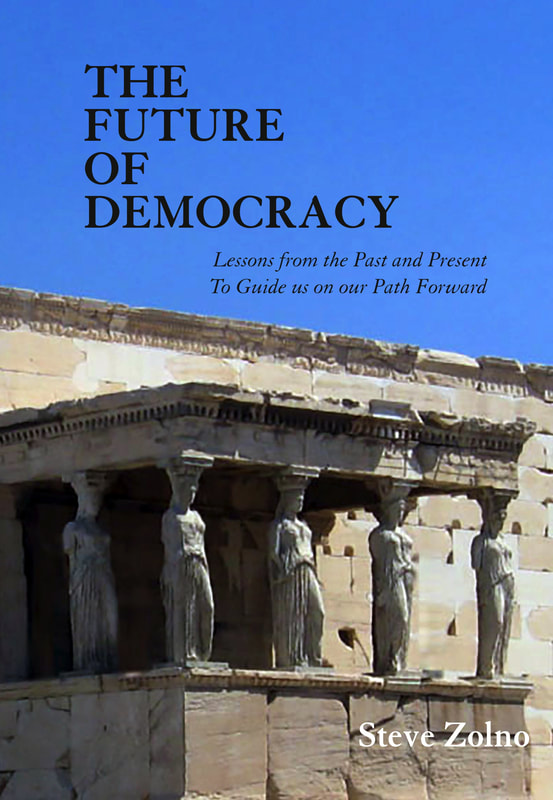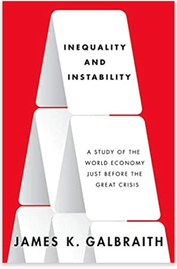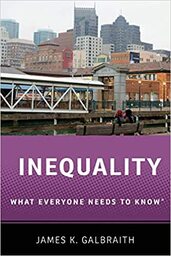|
The focus of our October discussion was two books by economist James Galbraith, Inequality and Instability: A Study of the World Economy Just Before the Great Crisis (2012) and his latest book, Inequality: What Everyone Needs to Know (2016).
Going back to ancient times such as Greece — and even in the Bible* — there is mention of how those in need often became dependent on the wealthy in hard times. If debts continue to be unpaid, debtors have gone to prison or had themselves and families perpetually indentured to the lender. Inequality leads to discontent among those at the lower end of the scale, which result in insurrection or revolution as has happened throughout history in countries including the US, France, Russia, and China. Economic discontent is more frequently expressed via elections in nations that are considered democratic. In countries considered democratic, however, there also is growing inequality that began in the 1980s and continues into our day. According to Galbraith: “Increasing inequality is a sign that something has gone wrong.” (Page 13) By all measures - both within and between countries — inequality is increasing. Galbraith doesn’t agree that democracy automatically leads to an egalitarian society. In his view: “the result holds only for a subclass of democracy, namely social democracies that have been stable for a long period of time.” (Page 15) Most of those are located in Western Europe, but Eastern European countries on the whole have the lowest level of inequality. In the US, “states with higher inequality tend to have lower turnout of potentially eligible voters in presidential elections — a result consistent with the idea that in high-inequality states the wealthier voters have a strong interest in restricting access to the ballot among the poor.” (Page 16) This is exactly the pattern we’re seeing at present in a number of southern states. Different from what some might expect, countries with less wage inequality have lower unemployment rates. (Page 17) American states that are highly polarized, with a strong divide between rural and urban areas, tend to vote Democratic. Since the 2008 crash, inequality is largely due to the division between those who do and don’t have stocks, since the stock market rallied within a couple years of the crash. Income and pay inequality were largely reduced after World War II, but now continues to shoot up. (Page 72) Globalization — goods being produced overseas more cheaply — have played a major role in that trend. (Page 97) Reductions in inequality generally take place over a long time as the result of changes in public policy. Reduction of inequality can be a driver for people to become more active and increase their tendency to vote if they don’t become lethargic. (Page 152) One factor that reduces inequality is more equal pay structures — i.e., not having a huge difference between those at the top and bottom of the pay scale. Strong social structures, like excellent medical and retirement benefits — also tend to reduce inequality. The 2008 crash — which should serve as a warning for our own day — was caused in large part by overly easy credit availability due to too much money in the system looking to be lent out, which in turn was the result of interest rates held artificially low. These trends followed the elimination of Depression-era regulations, such as Glass-Steagall, that prohibited banks from speculating in investments with client funds. (Page 293)
The main reason for the increase in inequality was an increase in investment income at the very top of the economic ladder, rather than increasing inequality of wages and salaries. The growth of tech spearheaded this trend. In the 1970s and 80s “the top technologists in the big corporations realized that they would be far better off if they set off on their own, incorporated themselves as independent technology firms, and then sold their output back to the companies for which they had formally worked in salaried jobs. In that way, technologists could become owners, taking advantage of venture finance, and could, in effect, upset the previous structure of American corporate valuation.” (Page 86) This trend was furthered by tax changes during the Reagan administration encouraging greater corporate executive salaries, paid in large part in stock options. “Now top incomes are no longer fixed salaries but instead closely track the stock market.” (Page 118) Deregulation and changes in the business culture also contributed to “corporate looting, rapid corporate growth, stock market valuations, too good to be true business plans and reporting, and vast accumulations of personal wealth by insiders.” (Page 132) A few other possible reasons for increasing inequality in the U.S.:
Galbraith does not put much stock in the theory, popular among some economists and politicians, that a major factor in US inequality is the rise of technology that put a premium on education and put those without education at a greater disadvantage. This theory is not well supported by available evidence. Why Do We Care about Economic Equality? “It should be possible for an egalitarian society to be entirely composed of the poor. [But] there seems to exist no such society in the world. Egalitarian states are almost all rich; poor countries are all highly unequal,” with Cuba as the possible exception. (Page 126) There is also considerable evidence that egalitarian societies do better in terms of health care, mortality, life expectancy, and other factors. Policies That Reduce Inequality “There is little doubt that countries with strong unions and high minimum wage laws — in relation to the average productivity of the country — have less inequality than those in the opposite position.” (Page 140) Other policies: Making income tax more progressive, Earned Income Tax Credit, Social Insurance Programs. One of our members stated that the economies — just like the environments — of all countries are interrelated. Thus the leading democracies must press for universal reforms to preserve our economies which are tied to basic rights for everyone.
Your comments and thoughts always are welcome. Also, don’t forget to look at our blog site renewingdemocracy.org Please recommend this newsletter to people who you think might appreciate it. If you want to be added to the list to receive each new newsletter when posted, fill out our contact form and check the box just above the SUBMIT button. You may also use that form to be removed from our list.
Visit our Books page for information about purchasing The Future of Democracy, The Death of Democracy, and Truth & Democracy. Click ↓ (#) Comments below to view comments/questions or add yours. Click Reply below to respond to an existing comment.
0 Comments
|
 5th edition now available 5th edition now available
Steve ZolnoSteve Zolno is the author of the book The Future of Democracy and several related titles. He graduated from Shimer College with a Bachelor’s Degree in Social Sciences and holds a Master’s in Educational Psychology from Sonoma State University. He is a Management and Educational Consultant in the San Francisco Bay Area and has been conducting seminars on democracy since 2006. Archives
July 2024
Categories |


 RSS Feed
RSS Feed